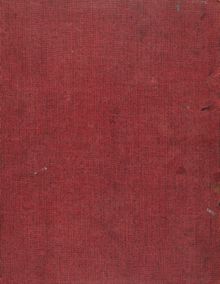| |||||||||||||||||||||||||
ARTIST MONOGRAPHS
|
|
STATUS: Forthcoming | 2/3/2026 This title is not yet published in the U.S. To pre-order or receive notice when the book is available, please email orders @ artbook.com |
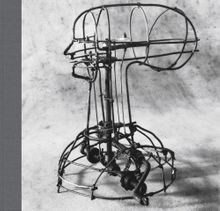 June Leaf: People
June Leaf: People
Published by Steidl.
A facsimile reprint of a 1994 book on the work of American artist June Leaf (born 1929), People contains 20 years of Leaf’s small metalwork sculptures. Notably, several of the book’s photographs were taken by her late husband, the photographer Robert Frank.
Leaf has described her sculptures as drawings, their wiry forms carving and unfurling into space like exploratory lines on a page. Playing and fighting figures, animals and contraptions in the tinkering spirit of Jean Tinguely emerge from intuitive combinations of brass, copper and tin; found metal rods and blades; wood and paint. Regardless of her subject, Leaf’s focus is on visceral whimsy, movement and ceaseless renewal through material and process: “I think of myself as a dancer making art,” she says, “or an aviator making art.”
PUBLISHER
Steidl
BOOK FORMAT
Paperback, 8.75 x 8.25 in. / 64 pgs / 41 bw.
PUBLISHING STATUS
Pub Date 2/3/2026
Forthcoming
DISTRIBUTION
D.A.P. Exclusive
Catalog: SPRING 2024 p. 93
PRODUCT DETAILS
ISBN 9783969993057 TRADE
List Price: $40.00 CAD $50.00
AVAILABILITY
Awaiting stock
STATUS: Forthcoming | 2/3/2026 This title is not yet published in the U.S. To pre-order or receive notice when the book is available, please email orders @ artbook.com |
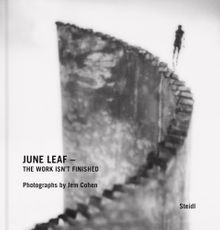 June Leaf: The Work Isn’t Finished
June Leaf: The Work Isn’t Finished
Photographs by Jem Cohen
Published by Steidl.
Text by Jem Cohen.
American artist June Leaf (born 1929) recalls how she first realized her calling at age three, sitting on the floor and wanting to truthfully depict a shoe. Now, at age 95, she remains steadfast in her commitment to her art practice, which she notes she has worked on every day for the past 75 years. As Robert Frank’s partner for over 50 years, Leaf’s own art (which deeply influenced Frank) was often overshadowed, but she remained unconcerned with the vicissitudes of art world fame and fortune.
For this intimate, radiant celebration of June Leaf’s career, photographer and filmmaker Jem Cohen (born 1962) gathered and carefully sequenced images that he shot over several decades—mostly of Leaf and her work in the studio. The book is a tribute forged in details: from Leaf’s small figures breathing mystery and humanity to her well-worn face, a map of persistence and understanding. Cohen’s organic and painterly Polaroids reject the dry factual recordkeeping that often constitutes catalog images of artworks in favor of seeking out the spirit of the works and their maker. A valuable addition to the crucial, overdue recognition of this extraordinary artist’s work, the book is a unique study of artistic creation.
PUBLISHER
Steidl
BOOK FORMAT
Clth, 7.75 x 8.25 in. / 108 pgs / 25 color / 38 bw.
PUBLISHING STATUS
Pub Date 2/3/2026
Forthcoming
DISTRIBUTION
D.A.P. Exclusive
Catalog: FALL 2024 p. 147
PRODUCT DETAILS
ISBN 9783969993392 TRADE
List Price: $45.00 CAD $65.00
AVAILABILITY
Awaiting stock
STATUS: Forthcoming | 2/3/2026 This title is not yet published in the U.S. To pre-order or receive notice when the book is available, please email orders @ artbook.com |
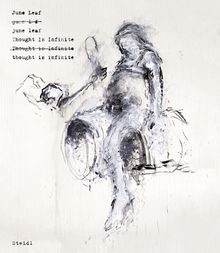 June Leaf: Thought Is Infinite
June Leaf: Thought Is Infinite
Published by Steidl/Whitney Museum of American Art.
Text by Carter E. Foster, Clara Rojas-Sebesta. Photographs by Alice Attie.
June Leaf’s extraordinary body of work--one built over nearly seven decades--belongs within a long tradition of visionary figures, from William Blake and Francisco Goya to James Ensor and Odilon Redon. Like these innovative predecessors, and incorporating elements of both Expressionism and Surrealism, Leaf infuses representational imagery with an intense subjectivity and personal symbolist vision. She does so through an extraordinary approach to and facility with materials, often combining mediums and matter in unorthodox ways.
Leaf’s exhibition at the Whitney and this accompanying comprehensive publication include drawings from every decade of her career, as well as a selection of sculptures and paintings, in order to elucidate the migration and cross-referencing of motifs and techniques from one medium to the other. In an immersive installation, the viewer perceives how the artist’s studio space intersects with her extraordinarily rich imagination and deeply personal, invented world in which fiction and reality indistinguishably merge.
June Leaf was born in Chicago in 1929. She began her artistic career in the 1940s, studying at the Chicago Art Institute and the New Bauhaus Institute of Design. In 1958, Leaf was awarded a Fulbright to study art in Paris. In 1960, she moved to New York. Her drawings, paintings and sculptures have been widely collected and are in many museums, including the Whitney Museum of American Art, The Museum of Modern Art, the Chicago Art Institute and the Smithsonian American Art Museum. Leaf has received two honorary doctoral degrees, one from DePaul University in Chicago and one from the Nova Scotia College of Art and Design in Canada.
PUBLISHER
Steidl/Whitney Museum of American Art
BOOK FORMAT
Hardcover, 8 x 9.75 in. / 280 pgs / illustrated throughout.
PUBLISHING STATUS
Pub Date 7/26/2016
Out of stock indefinitely
DISTRIBUTION
D.A.P. Exclusive
Catalog: FALL 2016 p. 86
PRODUCT DETAILS
ISBN 9783958291027 TRADE
List Price: $40.00 CAD $54.00
AVAILABILITY
Not available
STATUS: Out of stock indefinitely. |
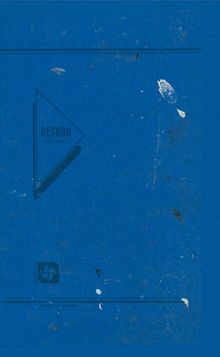 June Leaf: Record 1974, 1975 Mabou Coal Mines
June Leaf: Record 1974, 1975 Mabou Coal Mines
Published by Steidl.
PUBLISHER
Steidl
BOOK FORMAT
Hardcover, 7.25 x 12 in. / 194 pgs / illustrated throughout.
PUBLISHING STATUS
Pub Date 3/31/2010
Out of print
DISTRIBUTION
D.A.P. Exclusive
Catalog: SPRING 2010 p. 135
PRODUCT DETAILS
ISBN 9783869300511 TRADE
List Price: $59.95 CAD $70.00
AVAILABILITY
Not available
STATUS: Out of print | 00/00/00 For assistance locating a copy, please see our list of recommended out of print specialists |
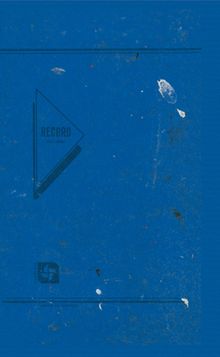 June Leaf: Record 1974/75 Mabou Coal Mines
June Leaf: Record 1974/75 Mabou Coal Mines
Published by Steidl.
PUBLISHER
Steidl
BOOK FORMAT
Clth, 7.25 x 12 in. / 194 pgs / illustrated throughout.
PUBLISHING STATUS
Pub Date 4/9/2010
Active
DISTRIBUTION
D.A.P. Exclusive
Catalog: FALL 2014
PRODUCT DETAILS
ISBN 9783869300450 TRADE
List Price: $50.00 CAD $67.50
AVAILABILITY
In stock
in stock $50.00 Free Shipping UPS GROUND IN THE CONTINENTAL U.S. |
